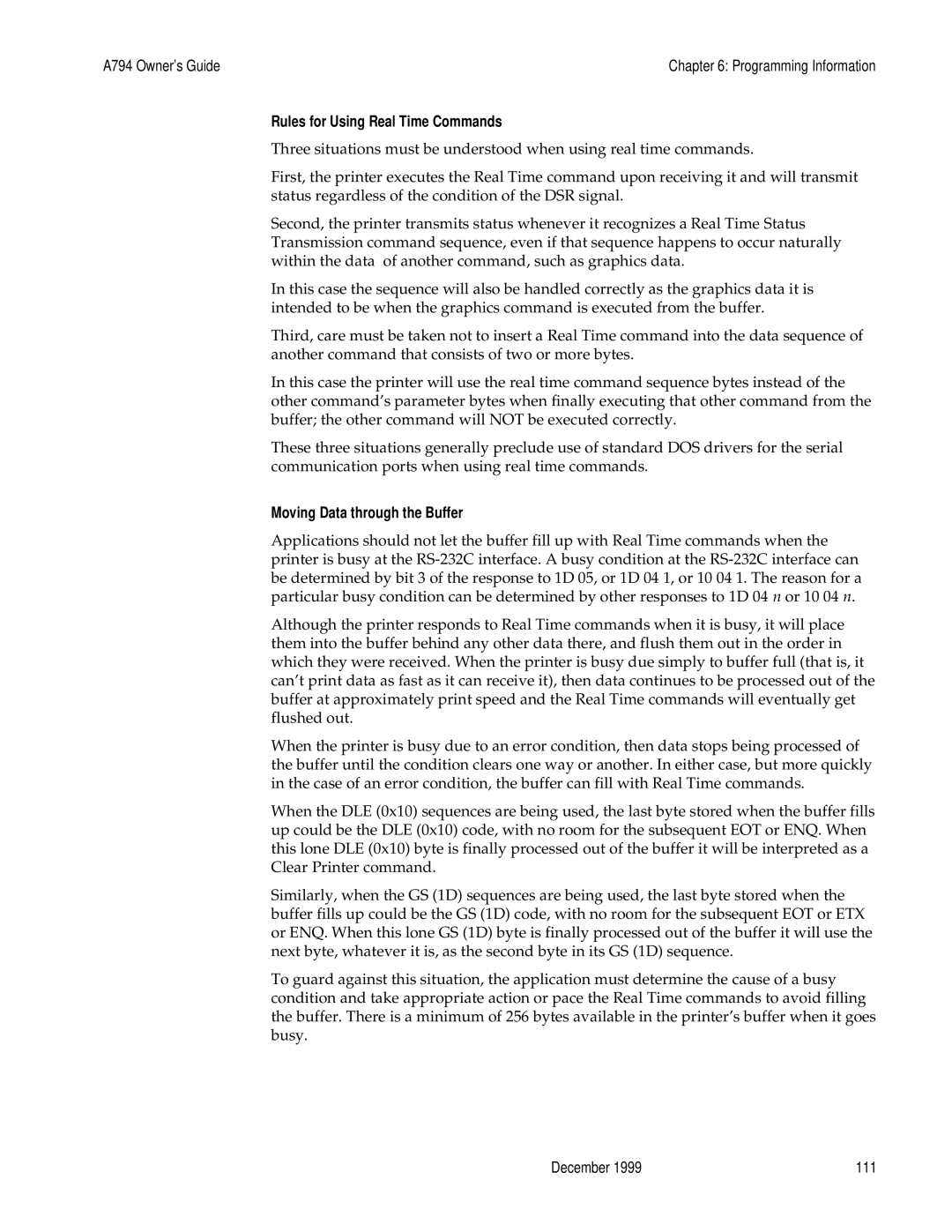A794 Owner’s Guide | Chapter 6: Programming Information |
Rules for Using Real Time Commands
Three situations must be understood when using real time commands.
First, the printer executes the Real Time command upon receiving it and will transmit status regardless of the condition of the DSR signal.
Second, the printer transmits status whenever it recognizes a Real Time Status Transmission command sequence, even if that sequence happens to occur naturally within the data of another command, such as graphics data.
In this case the sequence will also be handled correctly as the graphics data it is intended to be when the graphics command is executed from the buffer.
Third, care must be taken not to insert a Real Time command into the data sequence of another command that consists of two or more bytes.
In this case the printer will use the real time command sequence bytes instead of the other command’s parameter bytes when finally executing that other command from the buffer; the other command will NOT be executed correctly.
These three situations generally preclude use of standard DOS drivers for the serial communication ports when using real time commands.
Moving Data through the Buffer
Applications should not let the buffer fill up with Real Time commands when the printer is busy at the
Although the printer responds to Real Time commands when it is busy, it will place them into the buffer behind any other data there, and flush them out in the order in which they were received. When the printer is busy due simply to buffer full (that is, it can’t print data as fast as it can receive it), then data continues to be processed out of the buffer at approximately print speed and the Real Time commands will eventually get flushed out.
When the printer is busy due to an error condition, then data stops being processed of the buffer until the condition clears one way or another. In either case, but more quickly in the case of an error condition, the buffer can fill with Real Time commands.
When the DLE (0x10) sequences are being used, the last byte stored when the buffer fills up could be the DLE (0x10) code, with no room for the subsequent EOT or ENQ. When this lone DLE (0x10) byte is finally processed out of the buffer it will be interpreted as a Clear Printer command.
Similarly, when the GS (1D) sequences are being used, the last byte stored when the buffer fills up could be the GS (1D) code, with no room for the subsequent EOT or ETX or ENQ. When this lone GS (1D) byte is finally processed out of the buffer it will use the next byte, whatever it is, as the second byte in its GS (1D) sequence.
To guard against this situation, the application must determine the cause of a busy condition and take appropriate action or pace the Real Time commands to avoid filling the buffer. There is a minimum of 256 bytes available in the printer’s buffer when it goes busy.
December 1999 | 111 |
